Are you aware of the fact that segmentation adds to a crucial factor in your marketing campaign? This article demonstrates what segmentation is and how you can make the most out of it in Aritic PinPoint. To give you a gist of the matter, segments are subgroups of contacts. In fact, marketers claim that they are game changers.
Each segment is categorized based on the characteristics that contacts possess. By segmenting, you get to send accurately curated messages to specific groups of people. The aim of segmenting is to send out relevant content, i.e., relevant information and data, to your contacts, which is considered a crucial aspect of marketing. This makes your business come across as authentic and hence, enhances the deliverability rate. Therefore, creating segments is a win-win situation for both – you and your contacts.
Furthermore, you will read the benefit that segmentation reaps along with certain conditions. And with that, you will know how to locate and use Aritic PinPoint’s segment builder.
a) Why is Segmentation Important?
Deliverability and engagement have an equivalent relationship. Higher engagement, in turn, enhances the deliverability rate. And, the better the deliverability, the more the open rates. But first, we need to get more engagement in Aritic PinPoint; therefore, segmentation helps you do just that.
Now, a very effective (and probably the only) way to get there is by sending relevant messages to your contacts. This piques their interest and encourages them to interact with your content.
[lore_alert_message type=”info”]
Result: High engagement, deliverability rate, and a pleased contact base who wants to receive your messages and consume your content.
[/lore_alert_message]
But let’s say you do not want to create segments. You want the masses to receive a message that isn’t tailored to suit their interests, behaviors, and needs. And as a result, you send a particular kind of message to people with varied interests.
[lore_alert_message type=”info”]
Result: Agitated contacts that find your message as irrelevant and eventually, stop engaging with your content. This could end up hurting your engagement and worse, causing your deliverability to roll downhill.
[/lore_alert_message]
Okay, but, that was just a probability!
The question is not to decide whether you want to segment or not, it all boils down to how to segment effectively to enhance deliverability rate and meet your ultimate business goals.
b) Conditions to Segment
Through Aritic PinPoint’s segmentation tool, you can build segments. The best part is that it is two-fold.
- The first one is by choosing robust criteria to segment; i.e., you can make your message extremely targeted.
- The second is that the segment builder is available and accessible throughout the platform. This way, you can build segments on the fly.
Tags
You can find tags as an option under the Filters in the segment builder. These are widely used to organize contacts. These are also used to categorize contacts based on their histories with your business.
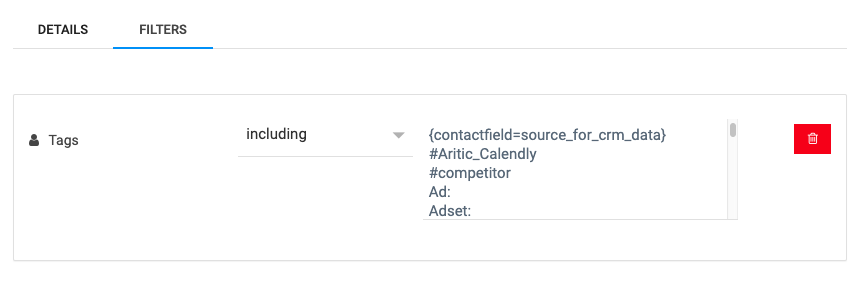
c) Here is how you can manage them:
Click on Contacts inside Aritic PinPoint > Click open the profile of any of the contacts > Edit option > Scroll down to the end to find the tags added. Here you can delete or add tags.
Tags come handy when you want to organize your contacts. Most tags are used internally only, and they represent the contact’s history with your business. For instance, tags can be used to identify the contacts as customers of certain products. In the image below, you can see the contact is a customer of multiple Aritic products.
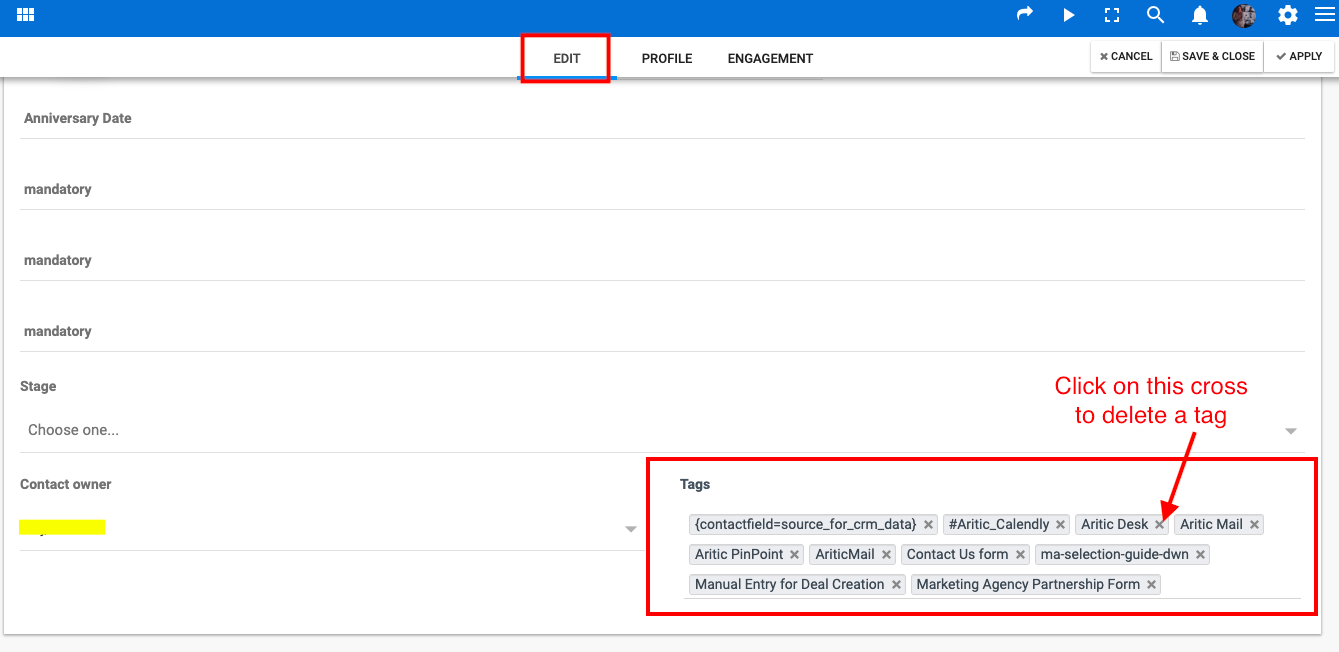
Using tags in segmentation has one simple purpose – to group contacts that share a similar tag. For example, inside Aritic PinPoint, you can create a full condition – “Tag Exists Aritic Desk“. What this translates into is contacts that have the Aritic Desk tag. If you save this tag, then any contact with this tag will automatically get segmented together into one group. Those not having this tag will be grouped separately.

Tags typically are a broader category. If you are using Custom Fields, you don’t need many tags.
d) Custom Fields
Tags tell about the contacts in a brief whereas custom field deals with the complete information. You can feel free to create multiple custom fields and place them on your external-facing forms, i.e., the doors used by contacts to enter your database. Furthermore, any information provided by the contacts is permanent and actionable; you can use this information to segment contacts.
Say, for example, you create a form that asks about the type of pet your contacts have or their Twitter handle, or probably, their favorite food. You can ask anything unless it is appropriate for your business needs, and it is only limited to the answers provided by the contacts. It depends on how relevant the data is that decides how enriched the segments will become. And better the segments, the more accurate your messages turn out.
P.S. Understand the differences between Custom Fields and Tags, and when to use which.
1. Here is how you can create a custom field:
Go to Settings > Custom Fields > Create New Custom Field
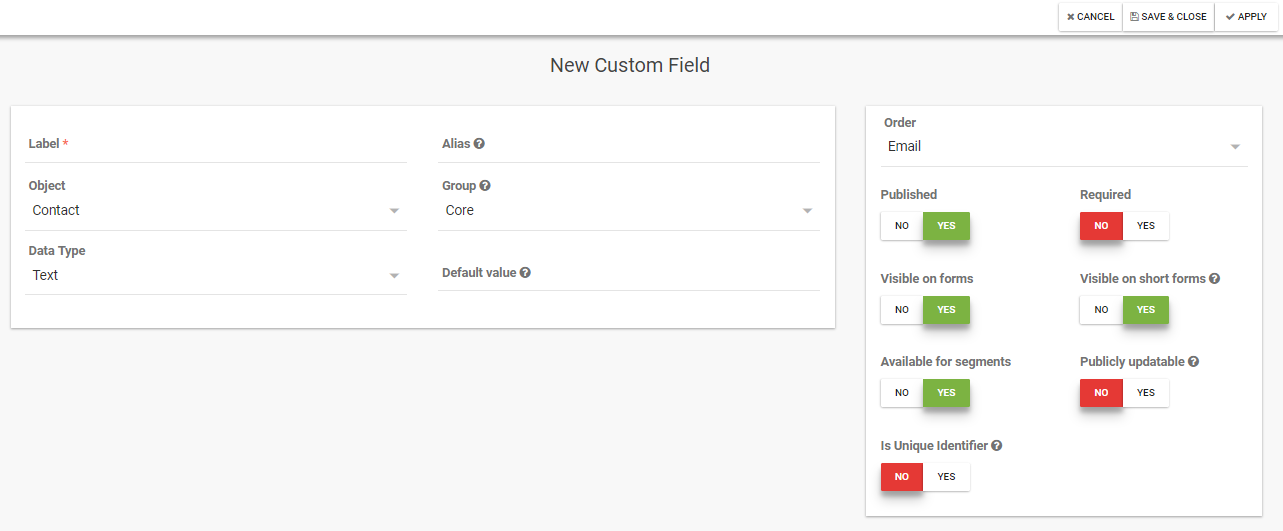
Note: Custom fields generate a personalization tag, so you can insert that tag into any message and automate personalization.
Contact Details
There are several other options under the contact detail category, in addition to the tags. These include:
- First name
- Last Name
- Organization
- Phone
- Time Scheduled
- Tags, + more.
You can even further customize and set filters to match the contact’s information. It is not necessary that you have only one filter added in one segment. You can add multiple filters to create your segment based on And/Or conditions. For instance, here this segment will group contacts that have entered their address and email. Others will be grouped separately.
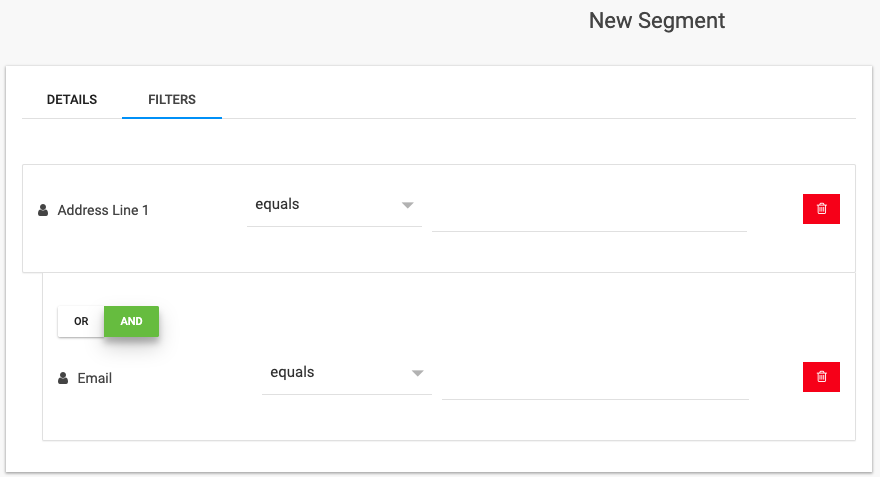
Action Filters
Now, after the hard work, it is time to reveal results. So after we have looked at how contact details, tags, and custom fields work, here comes action.
Actions reflect the events that happen within Aritic PinPoint; that is to say, the engagement on the content that you send to the contacts.
These can include clicks, shares, open rates, and click-through rates. That way, you can measure how well did the content perform.
Note: A strong feature of Aritic PinPoint is that it can execute global actions. These actions show that the contact “has/has not opened ANY email” or “has/has not clicked ANY link”. This is a competent way to find out engagement and accordingly, mold the content.

Geography
Furthermore, the geography element in segmentation lets you target contacts according to the region. Here are a few metrics that you can rely on:
- State
- City
- Zip
- Area code
- Country
Utilizing these metrics makes sure that you send messages to only the relevant contacts and keep the deliverability rate in check.
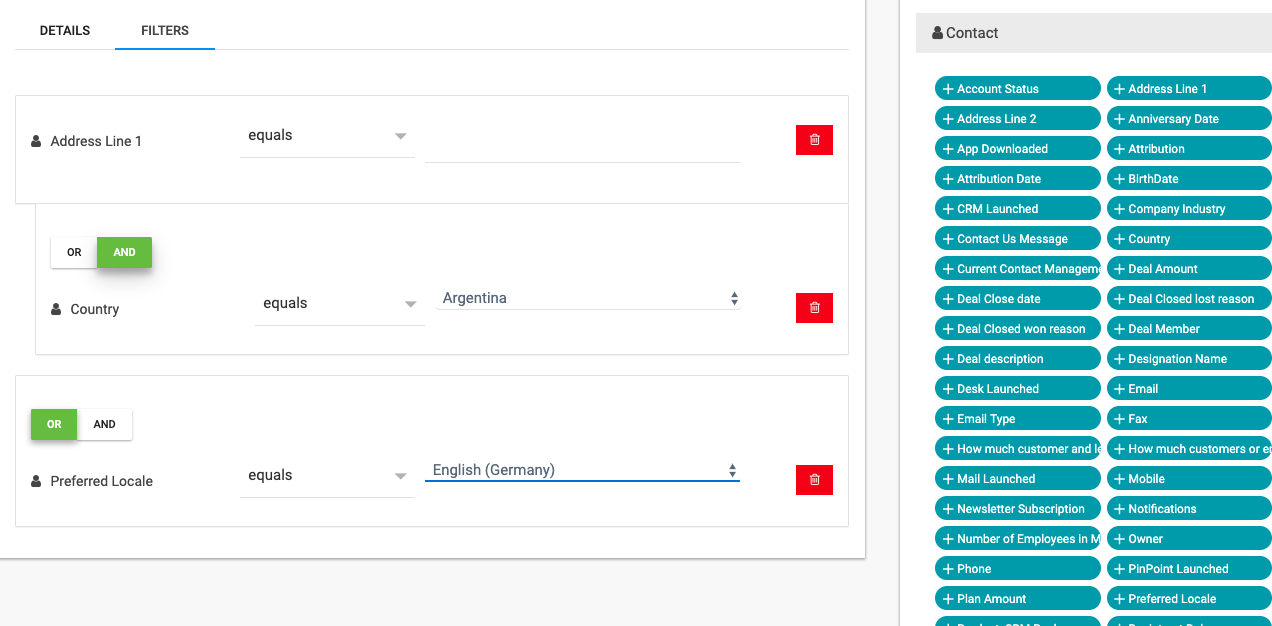
Website and Event Data
While the action category shows the internal statistics, site and event data aim to reveal the actions taken on the external web assets. For say, you can segment contacts according to the URLs they have or have not visited. In fact, you can segment them based on the type of device they use or do not use to visit your web assets – on desktop, tablet, or mobile. You will find all the filters inside the Segment Builder. Below you can see the various filters pertaining to URLs visited, page hit source, event data, and more.
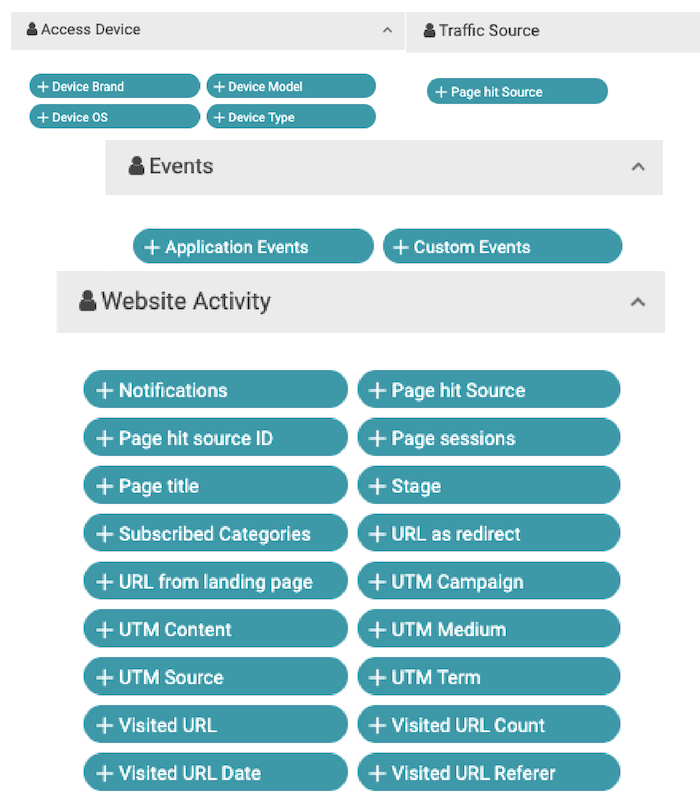
Opportunity
Now, this is the last one in segmentation and allows you to categorize contacts based on deals in our CRM. This can include opportunity status such as open, won, and lost. Besides, it provides real value and the title of the deal.
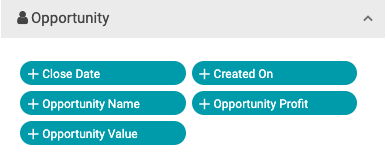
Steps to access the Segment Builder inside Aritic PinPoint
If you have already built segments inside Aritic PinPoint or have just imported contacts inside Aritic PinPoint, you will find all your segments listed on the ‘Segments’ page. To access this page, follow the steps:
Login to your Aritic PinPoint dashboard > Contacts (on the left panel) > Segments > Here you will see all your segments listed.
If you are building a segment for the first time, click on the ‘Create New Segment‘ option in the top right corner to go to the segment builder.

Building Segment Inside Automation Campaign Builder:
You can access the segment builder while building an automation campaign inside Aritic PinPoint. Login to your Aritic PinPoint dashboard, click on Automation Campaigns on the left panel > Create New Automation Campaign > Select Campaign Type.
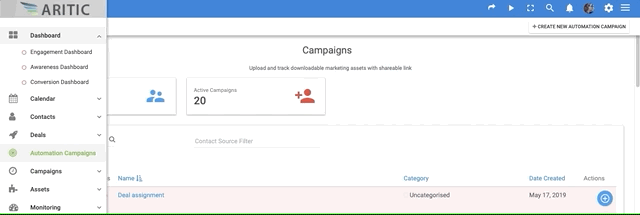
After selecting the Marketing campaign, click on the Launch Campaign Builder in the top right corner. You will now see the campaign builder page. Click on Contact Segments. You can add contacts directly from a pre-created segment. However, here we will create a segment from inside the automation campaign builder.
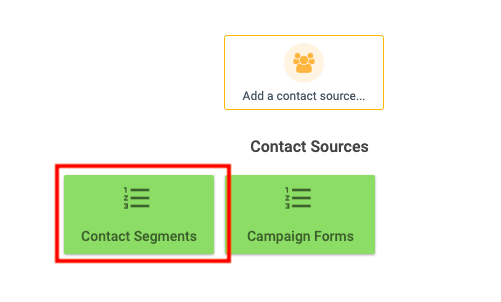
When you click on Contact Segments, you will see a new window. Here click on Create New Segment.

Upon clicking, a new window will open where you can now build a segment using appropriate filters. Once you are done, click on save and close to save all changes. Now, this segment is added to your automation campaign.
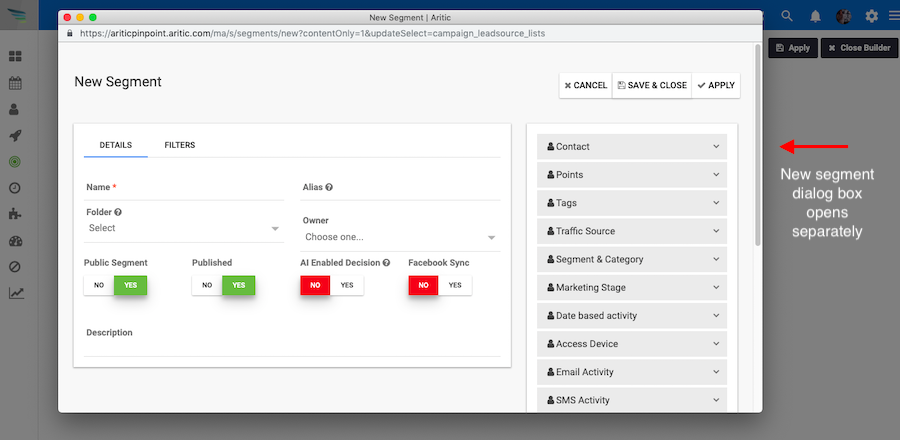
Accessing Segment Builder inside Email Blocks: Dynamic Content
When you are building an email template, you can use the Dynamic Content block to build segments. Inside the Dynamic content block, you can add variants that apply to certain conditions. Based on the conditions met, the content shown to your recipients differs. For instance, if you have a coupon code, you can add dynamic content for those who have a particular anniversary date or subscribers of your products. When you add such filters, your emails are automatically updated with relevant content.
For details on how to use a Dynamic Content block inside Email Builder, follow our comprehensive guide on inserting a dynamic content block inside email.
Conclusion
Technology sure is powerful, but technology alone cannot make your business successful. For that, you need solid marketing strategies that root from the foundational marketing principles.
[lore_alert_message type=”info”]
In a nutshell, you have got to understand your audience, know what your business goals are; and eventually align them.
[/lore_alert_message]
Advancing with the marketing campaign without really understanding segmenting is less likely to get you results. As they say, work smart and not hard; this is exactly what happens when you segment in the right way. If this guide helped you do not forget to share it with your peers. Also, do let us know in the comments what you think about it; any queries are also welcome.